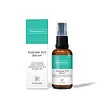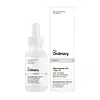What's inside
What's inside
 Key Ingredients
Key Ingredients

 Benefits
Benefits

 Concerns
Concerns

No concerns
 Ingredients Side-by-side
Ingredients Side-by-side

Water
Skin ConditioningPropanediol
SolventButyloctyl Salicylate
Skin ConditioningAzelaic Acid 15%
BufferingPolyglyceryl-6 Stearate
EmollientGlycerin
HumectantPolyglyceryl-4 Oleate
EmulsifyingAvena Sativa Kernel Flour
AbrasiveGlyceryl Caprylate
EmollientSodium Anisate
AntimicrobialSodium Levulinate
Skin ConditioningPolyglyceryl-6 Behenate
Emulsion StabilisingRosa Canina Fruit Extract
AstringentCetyl Hydroxyethylcellulose
Emulsion StabilisingXanthan Gum
EmulsifyingSodium Phytate
Aloe Barbadensis Leaf Juice
Skin ConditioningCamellia Sinensis Leaf Extract
AntimicrobialWater, Propanediol, Butyloctyl Salicylate, Azelaic Acid 15%, Polyglyceryl-6 Stearate, Glycerin, Polyglyceryl-4 Oleate, Avena Sativa Kernel Flour, Glyceryl Caprylate, Sodium Anisate, Sodium Levulinate, Polyglyceryl-6 Behenate, Rosa Canina Fruit Extract, Cetyl Hydroxyethylcellulose, Xanthan Gum, Sodium Phytate, Aloe Barbadensis Leaf Juice, Camellia Sinensis Leaf Extract
 Reviews
Reviews

Ingredients Explained
These ingredients are found in both products.
Ingredients higher up in an ingredient list are typically present in a larger amount.
Water. It's the most common cosmetic ingredient of all. You'll usually see it at the top of ingredient lists, meaning that it makes up the largest part of the product.
So why is it so popular? Water most often acts as a solvent - this means that it helps dissolve other ingredients into the formulation.
You'll also recognize water as that liquid we all need to stay alive. If you see this, drink a glass of water. Stay hydrated!
Learn more about WaterXanthan gum is used as a stabilizer and thickener within cosmetic products. It helps give products a sticky, thick feeling - preventing them from being too runny.
On the technical side of things, xanthan gum is a polysaccharide - a combination consisting of multiple sugar molecules bonded together.
Xanthan gum is a pretty common and great ingredient. It is a natural, non-toxic, non-irritating ingredient that is also commonly used in food products.
Learn more about Xanthan Gum